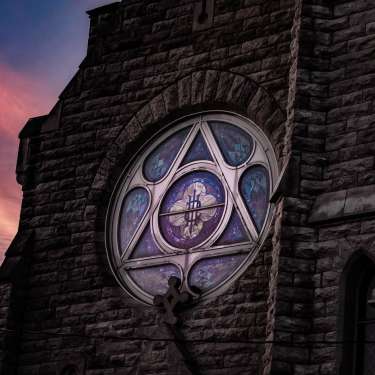Clarksville is home to many outdoor attractions, parks, and walking trails, but none have as much history packed into one place as Dunbar Cave. Located just ten minutes away from historic downtown Clarksville, the 144-acre Dunbar Cave State Park is a simple nature park at first glance. The Visitor’s Center and front garden lead into a charming picnic area where you can spend a breezy afternoon overlooking Swan Lake. But down the path, just beyond the picnic tables, is the entrance to the cave. Walking up the steps onto the poured concrete floor, I could immediately feel the cool air from the natural springs flowing from the cave mouth. If I closed my eyes, I could almost imagine the cave of the past: the floor filled with electric lights and people, the two-story bar bursting with food and drinks, and the area overflowing with live music. Standing in front of the cave, you can feel its history embedded deep in the rocks.
Header Photo: Lucas Ryan Chambers
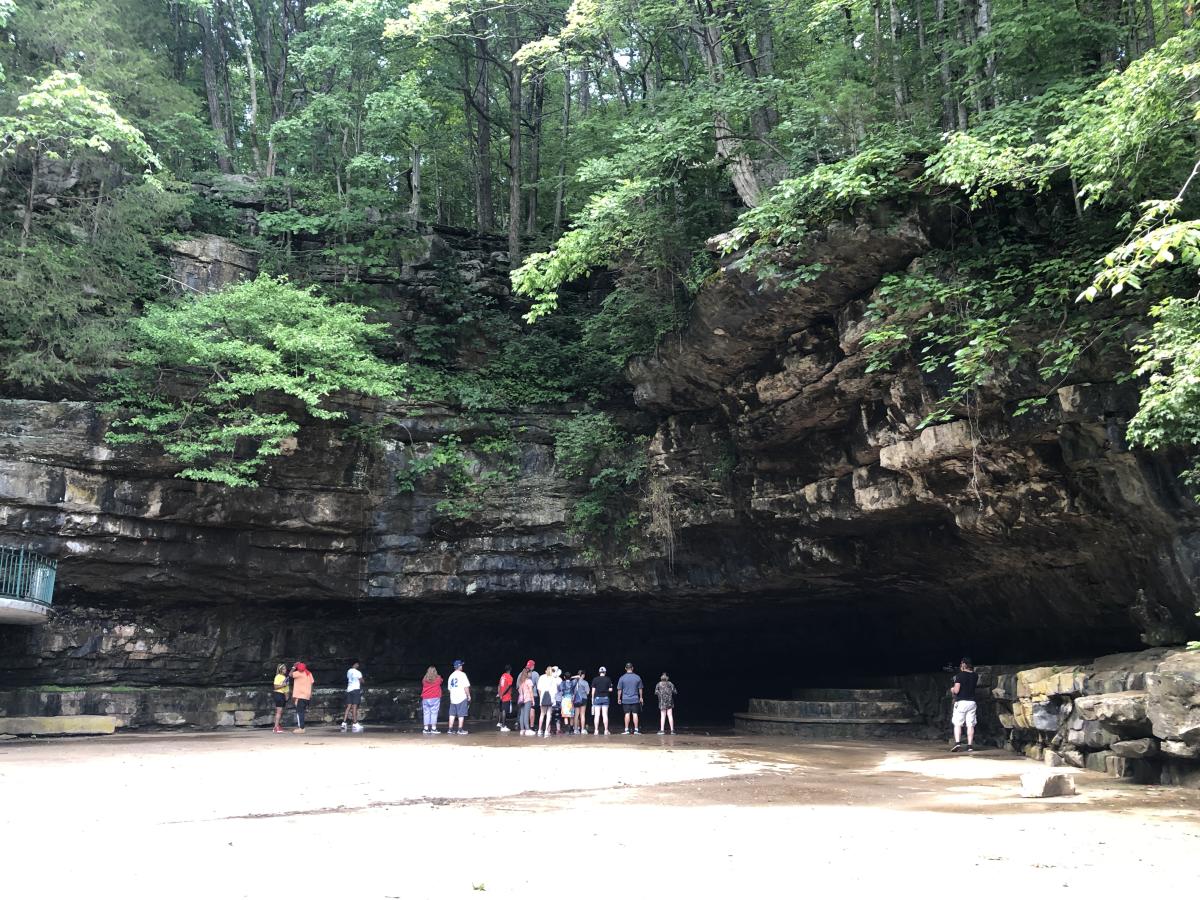 Dunbar Cave Opening
Dunbar Cave Opening
Dunbar Cave has been used for thousands of years, namely as a source of shelter for Native American tribes. The cave is the largest-known cave on the Western Highland Ridge of Tennessee and contains Mississippian Native American charcoal cave art and limestone carvings that date back to the fourteenth century. Native American arrowheads, tools, and even burial sites have been discovered at the cave entrance and farther inside the eight-and-a-half miles of explored passages. The inside of the cave is open May through September, so all I got was a peek through the gate at what lies within!
In 1790, Isaac Rowe Peterson discovered the cave and laid claim to it before collecting his family from North Carolina to live on the land. When he returned to Tennessee the following year, he was surprised to find that Thomas Dunbar had constructed a blockhouse on the property. The two men engaged in a legal battle over the land that lasted until 1792. Peterson won the rights to the land, but Dunbar’s name was the one that lived on!
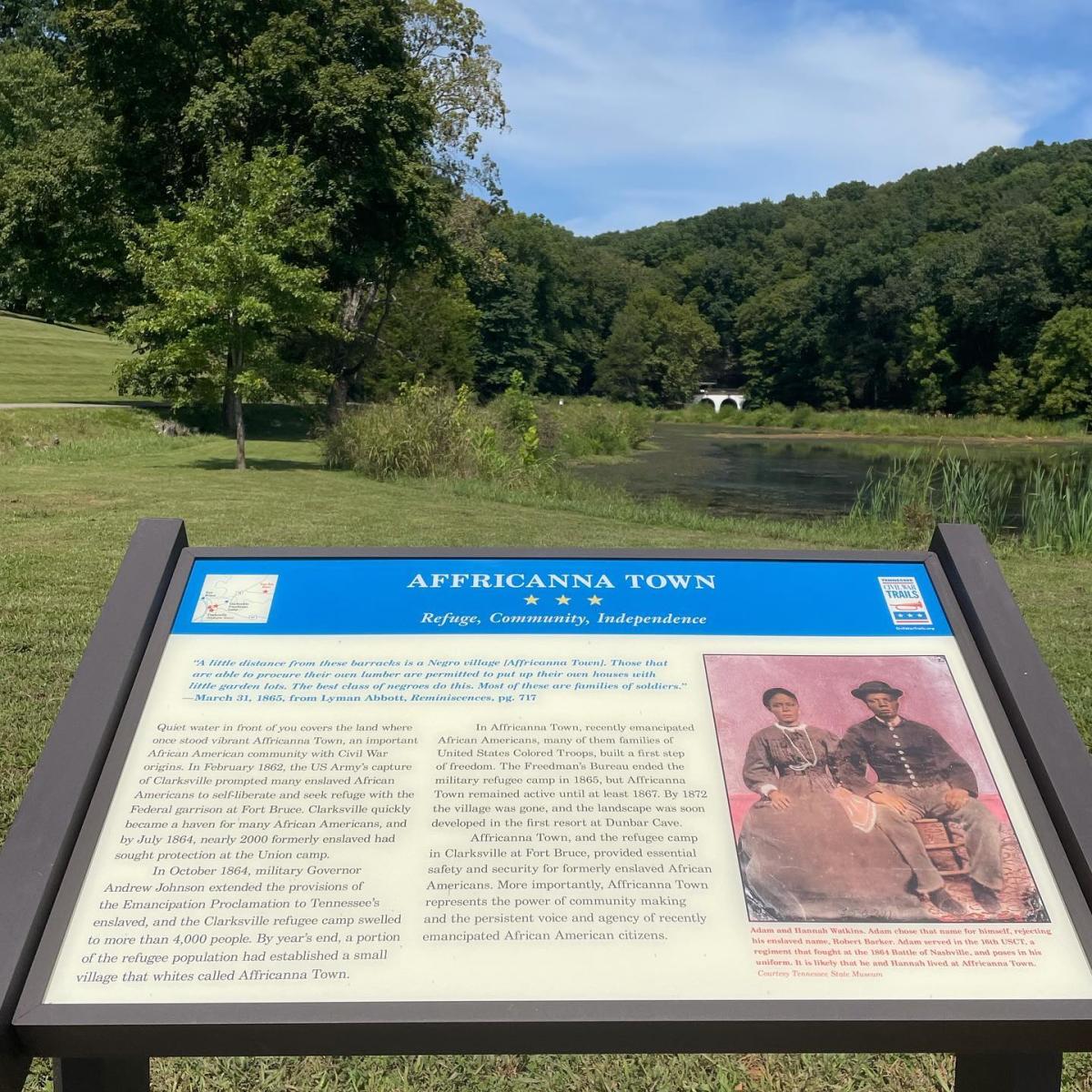 Affricanna Town Sign
Affricanna Town Sign
During the Civil War, the Confederate army used the cave to hide horses and troops from the Union soldiers. It was also used for social gatherings during the war, which became its primary use after the war ended as the cave’s consistent temperatures kept the area cool in the summer and warm in the winter. Following the end of the Civil War, the area around Dunbar Cave became known as Affricanna Town, a place of refuge for liberated and self-liberated former slaves. It grew to hold over four thousand African Americans and provided them with a safe and secure place to live as they moved from bondage into freedom.
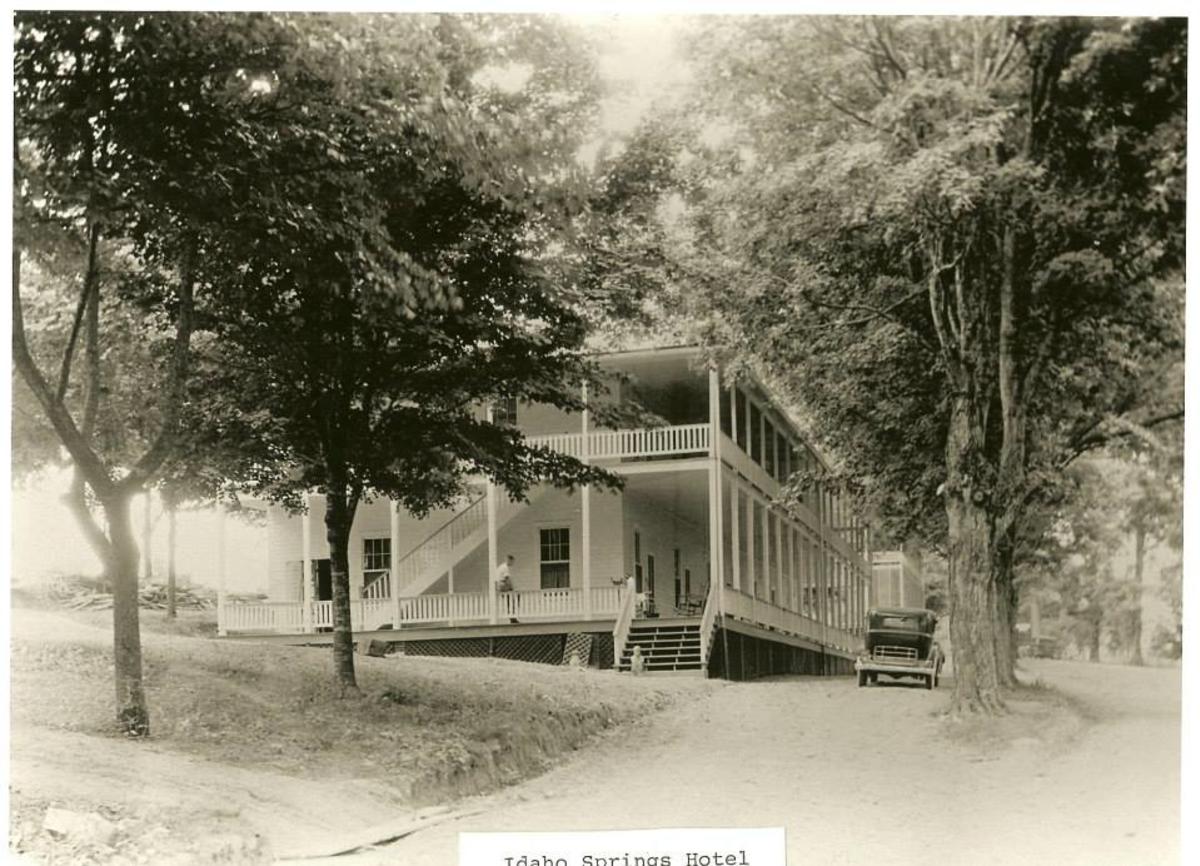 Idaho Springs Hotel | Photo Courtesy of Dunbar Cave State Park
Idaho Springs Hotel | Photo Courtesy of Dunbar Cave State Park
The rich mineral springs surrounding Dunbar Cave — named Idaho Springs by the Native Americans — were said to have strong healing properties and prompted the erection of cabins in the 1850s and the Idaho Springs Hotel in 1879. The hotel changed hands several times over the next fifty years, during which it caught fire and was rebuilt in 1893. Dances and conventions were held on the wooden floor in the cave entrance until 1931, when a group of Clarksville businessmen formed the Dunbar Cave and Idaho Springs Corporation and decided to turn the cave and park into a wellness resort that they dubbed “The Showplace of the South.” They constructed electric lights, swimming pools, a bathhouse, tennis courts, a footbridge across Swan Lake, and even enlarged the dance floor and concession stand at the cave entrance, adding a railed terrace to the top. The Big Band era took Dunbar Cave by storm. Musicians such as Glenn Miller, Kay Kaiser, Artie Shaw, Guy Lombardo, Lena Horne, Blue Baron, Benny Goodman, and more performed at the cave entrance and drew crowds of thousands.
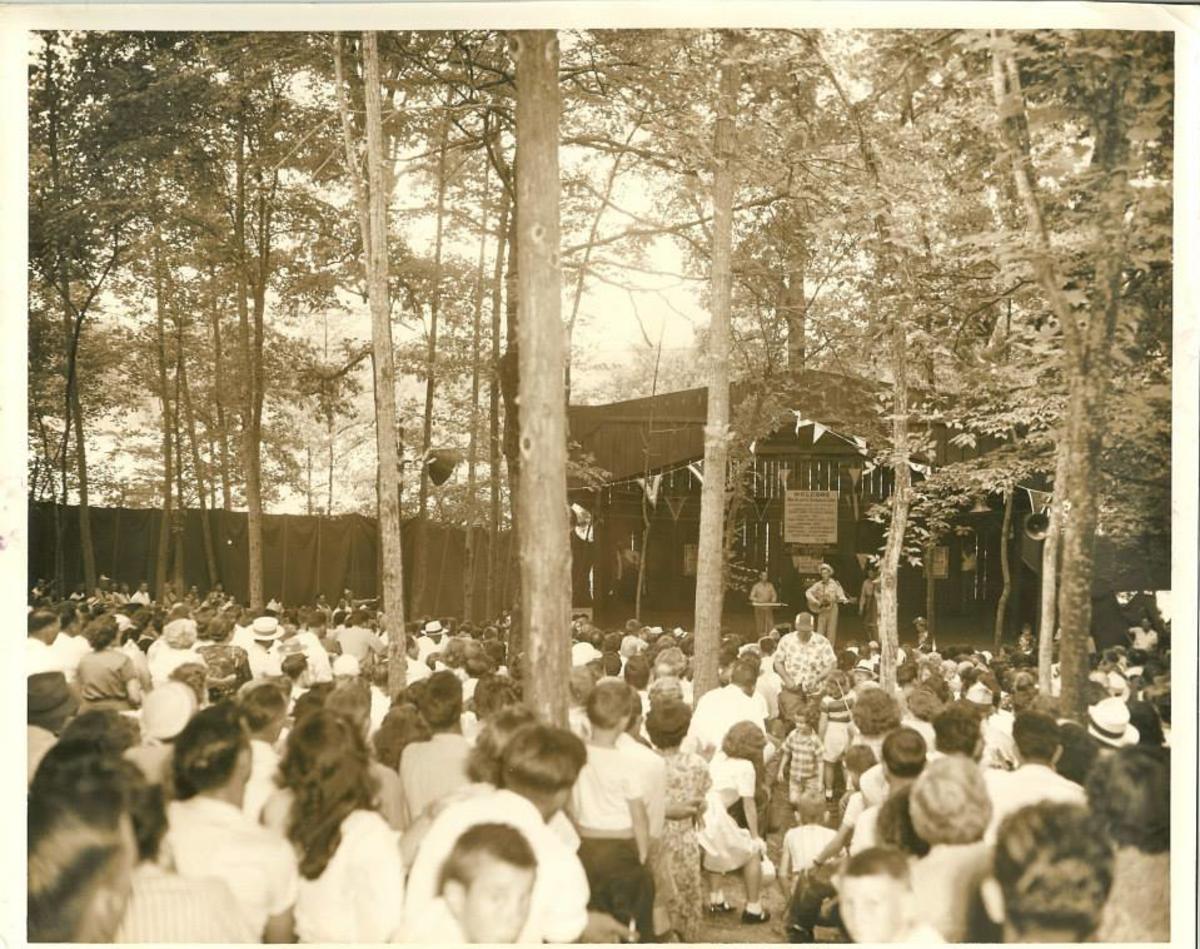 Roy Acuff Performing at Dunbar Cave | Photo Courtesy of Dunbar Cave State Park
Roy Acuff Performing at Dunbar Cave | Photo Courtesy of Dunbar Cave State Park
In 1948, Roy Acuff put Dunbar on the Tennessee Music Pathway when he purchased the cave and developed the park into a country music destination, featuring artists like Minnie Pearl, Ernest Tubb, and the Smokey Mountain Boys. He famously headlined a Fourth of July show to celebrate his ownership of the cave. Acuff built an adjoining golf course and billed his music, dancing, and radio shows as Roy Acuff’s Dunbar Cave. In 1950, the Idaho Springs Hotel burned down for the second time and was never rebuilt. Dunbar Cave declined in popularity because of the rise of air conditioning units during the 1950s and was eventually sold by Acuff in 1963.
The city of Clarksville purchased the golf course in 1972 following the cave’s closure, and in 1973, the state of Tennessee purchased the rest of the property. They removed all commercialization from the cave and park, including the electric lights added as fixtures inside the cave and its entrance. They filled the swimming pool and replaced it with gardens, renovated the historic 1933 bathhouse to turn it into what is now the Visitor’s Center and museum, and declared the cave to be a state natural area, which it has remained ever since. Dunbar Cave closed in 2010 as a result of the discovery of bats with White Nose Syndrome but reopened with no further problems in 2015.
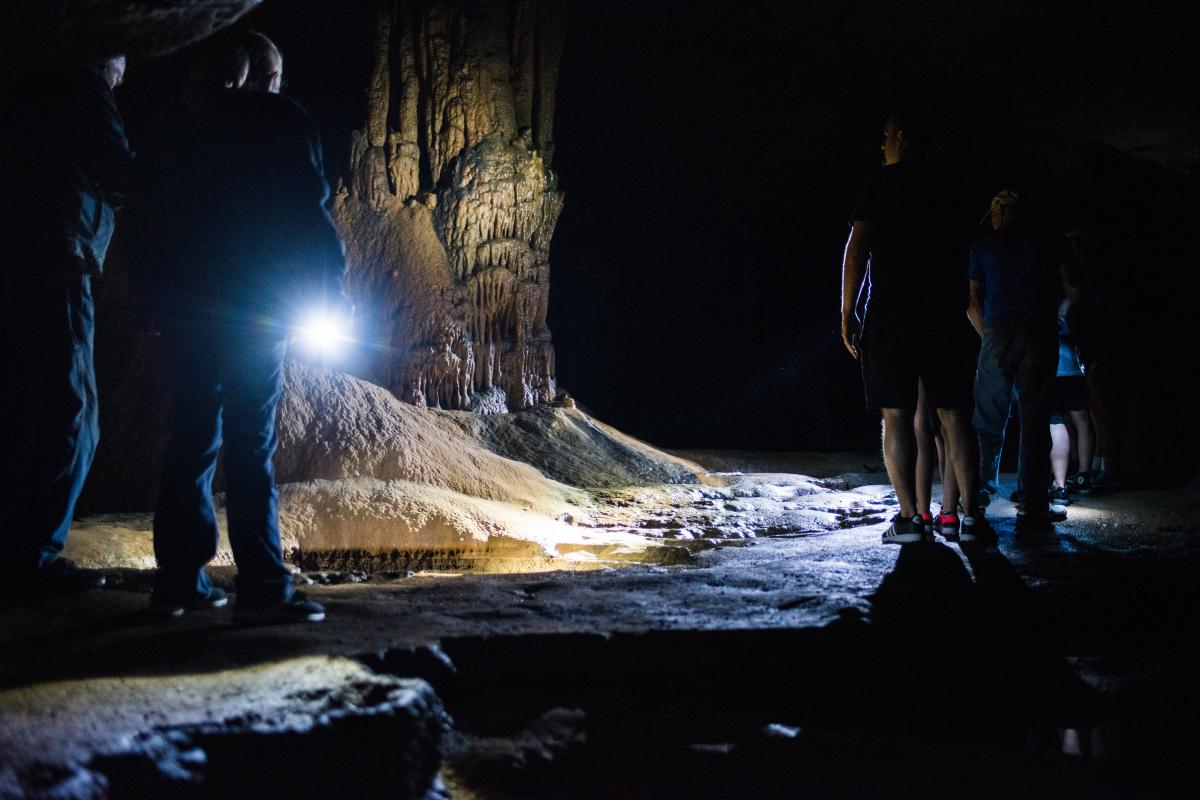 Dunbar Cave Tour | Photo Courtesy of Lucas Ryan Chambers
Dunbar Cave Tour | Photo Courtesy of Lucas Ryan Chambers
Today, you can explore Dunbar Cave and its prehistoric Native American artwork through guided cave tours from May to September. In 2022, Friends of Dunbar Cave released a 360-degree virtual reality tour of the cave for those who are unable to take a tour during the open season or who wish to tour the cave throughout the year. To see more of the park as a whole, check out the three miles of hiking trails that take you around the lake and through the prairie and forest on the north side of the park. See if you spot any cool wildlife on your way and use the park’s checklists to keep track of your flora and fauna finds. The park also offers activities and educational events throughout the year with park rangers, so be sure to keep an eye on the park’s website. I’ve given you a bird’s eye view of the history behind Dunbar Cave, and more can be discovered about the cultural history onsite. 2023 marks Dunbar Cave’s fiftieth anniversary as a state park, so on your next trip to Clarksville, make sure to stop by the museum and Visitor’s Center and experience the entire park for yourself!
